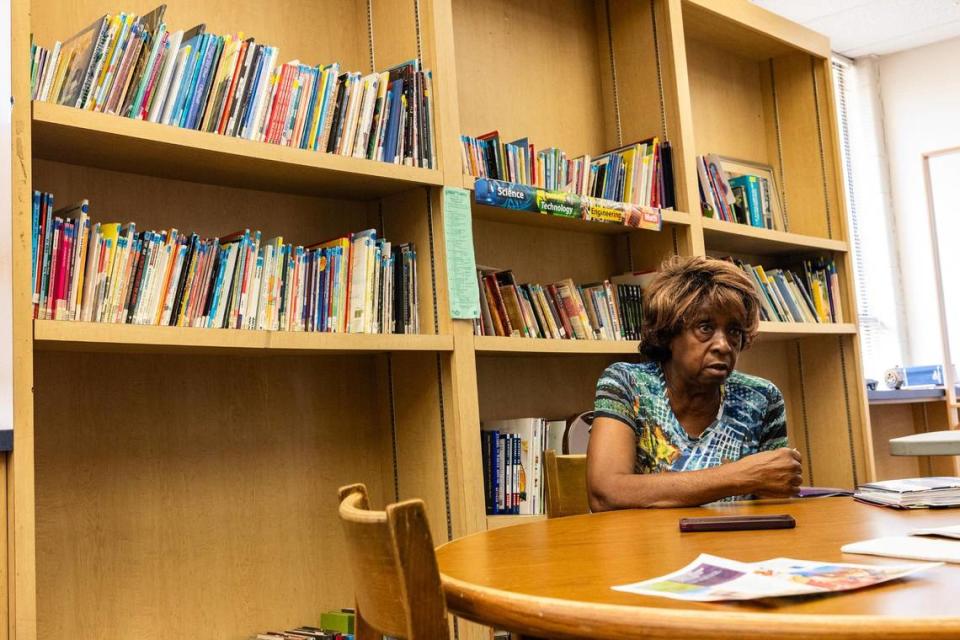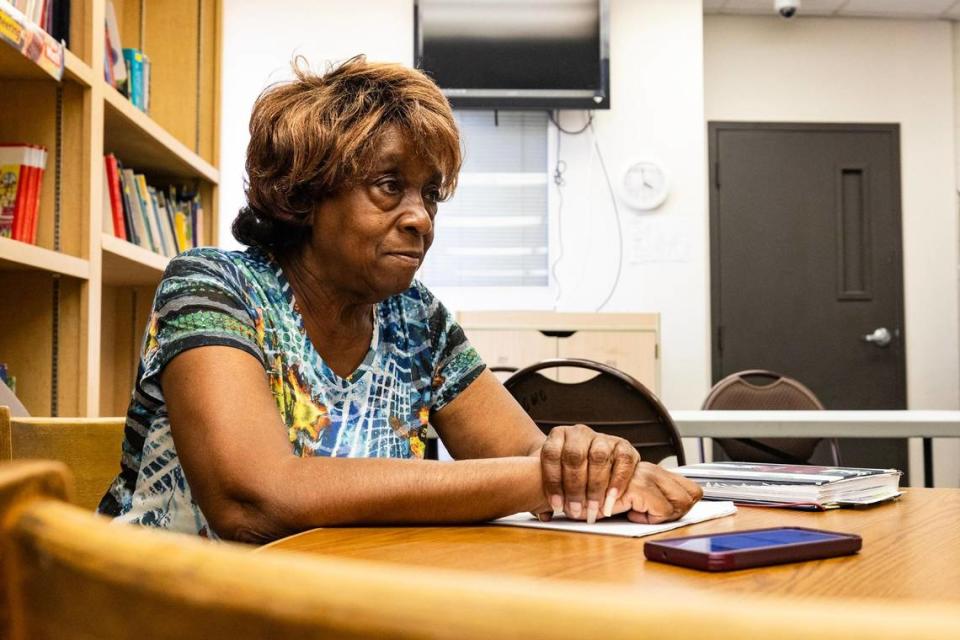As Fort Worth grows, residents in these neighborhoods are at risk of being priced out
Geraldine Williams’ family has lived in Fort Worth’s Historic Southside neighborhood since the early 1960s. Three generations of her family have grown up on East Broadway Avenue.
Williams remembers walking to James E. Guinn school on the other side of the freeway and enjoying the neighborhood stores along Evans Avenue. Most of the homes are single story bungalows built on 5,000-square foot lots, but there are some older two story Victorian homes that date to the 1920s.
“You used to see people walking around all the time, but not anymore,” she said. The area struggles with illegal dumping, drug use, and people camping in empty lots or on peoples’ doorsteps.
Even with these challenges, home values in Historic Southside increased over 80% in 2021, according to a recent report from the city of Fort Worth called the Neighborhood Conservation Plan and Housing Affordability Strategy.
The report was created as a road map for how the city could add affordable housing, and protect longtime residents from getting pushed out due to rising rents and increasing home values that bring higher property taxes.
“The goal is to have every Fort Worth resident live in a decent, safe and affordable housing regardless of what neighborhood they live in,” said Victor Turner, director of the city’s neighborhood services department.

The report also shows areas of the city where residents could already be getting pushed out due to increasing home values and rising rents. Most of the residents in these areas identify as Hispanic or Black, according to the report.
Fort Worth is also adding jobs at a faster rate than it is adding housing, which is increasing home values and putting ownership out of reach for most residents. The income required to buy a home in Fort Worth has roughly doubled in the last 10 years.
The city identified three indicators that might make a neighborhood unaffordable for longtime residents: Rising home values, rapidly declining poverty, and an increase in college educated residents.
The report lists of strategies to help people stay in their homes, but some residents said they are skeptical the city will take steps to put those recommendations into action.
Who’s at risk?
The report looked at homeowner age, income, education and home value to determine the neighborhoods where rising costs might push out longtime residents.
Areas where more than a third of households were led by someone older than 55 and where home values were rising faster than incomes were marked as high risk.
Areas with a rapid increase in household income combined with a rapid increase in the number of residents with bachelor’s degrees were marked as places where longtime residents may already be getting pushed out, according to the city’s report.
Neighborhoods in both categories were almost entirely in neighborhoods where the majority of the population identifies as non-white.
A family earning Fort Worth’s 2021 median income of $64,576 could not afford to buy a home priced at the median $296,000, according to the report. The only neighborhoods where housing remains affordable are mostly in southeast Fort Worth, east of Interstate 35W and south of Interstate 30.
There are also some affordable areas around Como, Las Vegas Trail and the north side around Meacham International Airport, according to the report.
That puts pressure on those neighborhoods, which have lower housing costs but also higher concentrations of families living in poverty.
New homes in Historic Southside, where the median household income is $31,442, are selling for an unheard of $250,000 to $350,000.
Houses in the area used to sell for between $50,000 to $100,000, said Demetria Elisher, a home builder who grew up in the Historic Southside.
Some of the increase is the result of rising land prices combined with added costs for labor and materials, Elisher said.
She paid $5,000 for her first lot in the area in 2017, and $60,000 for her most recent project in 2022.
She also acknowledged her high standards for home building have contributed to higher prices.
“Does that affect people having a place to stay sometime? Yes, but that’s not my intention,” she said.
Help for neighborhoods
The report put forth a series of strategies to increase the amount of affordable housing and help protect neighborhoods.
Some are things Fort Worth is doing already, like the neighborhood improvement program, which targets city funds to a single neighborhood to clear vacant lots, fix sidewalks and install streetlights.
Lifelong Stop Six resident Sharon Armstrong has been impressed by the effect of the program on her neighborhood, saying it finally feels like the city is listening to residents when before “they would hear you, but they wouldn’t hear you.”

Armstrong remembers the dirt roads, running to get drinking water from a well, and the underdeveloped rural community that was Stop Six in the 1960s. She lived on the corner of Village Creek Street and Cottey Street where her father bought his first cow across the street, the site of a dairy farm and oil well.
“One thing that’s important back in those days, African-Americans couldn’t own. They wouldn’t sell to African-Americans,” Armstrong said. “So by us having our own house that actually sheltered us from a lot of the racism that occurred.”
The city is proposing doubling the size of that program in the 2024 budget to be able to target two neighborhoods instead of one.
Help for housing
The report’s strategies around housing call for attacking both the costs of building new homes and the cost of ownership.
It proposes establishing a land bank in which the city would sell tax foreclosed or other city owned properties at lower prices to cut down on new home costs. The city could also require these properties be used for affordable housing.
The city of Dallas established its program in 2004, which led to the construction of 674 units of housing for low income home owners.
The city of Fort Worth has 200 properties that could be used in a future land bank, according to the report.
People need help fixing up their homes, said home builder Elisher.
“If you don’t offer them help, and just ticket, ticket, ticket through Code Compliance, you’re not going to change their minds and hearts to want to bring the neighborhood up a level,” she said.
The city has a program for residents in targeted areas inside Loop 820 in which they can get a five-year city property tax break to fix up their houses. The report calls for working with Tarrant County and the Fort Worth school district to expand that tax break.
More money will be needed for Fort Worth to have enough housing that’s affordable for residents across the income spectrum.
The report recommended the city invest $100 million over a five year period. This money could be used to encourage affordable development, fund programs that help residents stay in their homes, and build up services to reduce homelessness.
In return for the $100 million, Fort Worth could see as much as $200 million to $300 million in outside investment, which could build as many as 3,000 houses to help keep housing affordable for everyone.
The money could come from federal grants, local partnerships, city bonds, or the general fund, but that would have to be worked out by the City Council, said neighborhood services director Turner.
He urged those gathered at an Aug. 16 meeting to discuss the report to lobby the City Council to make this funding a priority.
As a home builder, Elisher said she’s ready to help.
“I’m looking forward to seeing this with my eyes, and not on a sheet of paper and in a book,” she said.

